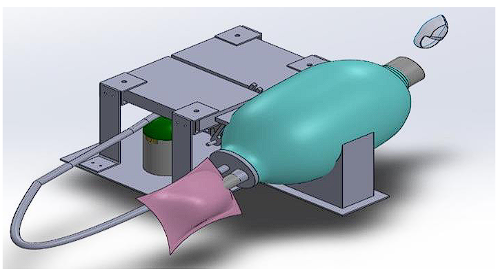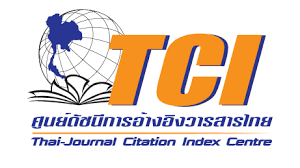A Decision Model for Concept Design Evaluation for Mechanical Ventilator Machines Used During the COVID-19 Pandemic
doi: 10.14456/mijet.2023.12
Keywords:
human’s lung, COVID-19 virus, ventilator machine, WHO, concept design, intuitionistic fuzzy setAbstract
Ventilator machine which has been approved for the treatment of the acute respiratory distress syndrome associated with the novel COVID-19 disease, is used for getting in oxygen and carbon dioxide out of human lungs. With the urgent need for the machines in our hospitals, their designs are been localized. To select the best design, considering the many factors associated with its development, a comprehensive study of the concept designs evaluations process has been presented. In this paper, an extended intuitionistic fuzzy multi-criteria decision-making (EIFMCDM) model which is based on the integration of the Complex Intuitionistic Fuzzy Bonferroni Mean (CIFBM) operator and the Intuitionistic Fuzzy (IF) Technique for Order Preference by Similarity to the Ideal Solution (TOPSIS) method has been proposed for concepts design evaluation of some new mechanical ventilator machine prototypes. The EIFMCDM model, which allows for multi-dimensional fuzzy information typically associated with real problems like concept design selection to be captured in the evaluation process, addresses a significant challenge in the concept design evaluation literature. Results from the concept design evaluation shows that the concept design described with the code VD2, VD4 and with the ranking values 0.525 and 0.439 respectively has the best and least designs, and the chances to be manufactured and used for COVID-19 treatment. This study has presented a new model for concept design evaluation, and attempt has been made to validate the feasibility of the model performance, the study conclude therefore that the model is feasible.
References
C. Huang, Y. Wang, X. Li, L. Ren, J. Zhao, Y. Hu, “Clinical features of patients infected with 2019 novel coronavirus in Wuhan, China,” J Formos Med Assoc., pp.19-21, 2020.
TP. Velavan, CG. Meyer, “The COVID-19 epidemic,” Trop Med Int Heal., Vol. 25(3), pp.278–80, 2020.
V. Stadnytskyi, CE. Bax,A. Bax, P. Anfinrud, “The airborne lifetime of small speech droplets and their potential importance in SARS-CoV-2 transmission,” Proc Natl Acad Sci U S A., vol. 117, no. 22, pp. 11875–11877, 2020.
J. M. Pearce, “A review of open source ventilators for COVID-19 and future pandemic,” F1000Research., 9 (May): 218, 2020.
KF. Yuen, X. Wang, F. Ma, KX. Li, “The psychological causes of panic buying following a health crisis,” Int J Environ Res Public Health., vol. 17, no.10, p. 3513, 2020.
K. Iyengar, S. Bahl, R. Vaishya, A. Vaish, “Challenges and solutions in meeting up the urgent requirement ofventilators for COVID-19 patients,” Diabetes&Metabolic Syndr Clin Res., vol.14, no.4, pp. 499–501, 2020.
KT, Ulrich, SD. Eppinger, “Product design and development,” 5th ed. McGraw-Hill. New York: McGraw-Hill.; 2011.
S. Pugh, “Creating innovative products using total design: The living legacy of Stuart Pugh,” Reading, MA: Addison-Wesley. 1996.
A.M. King, S. Sivaloganathan, “Development of a Methodology for Concept Selection in Flexible Design Strategies,” J Eng Des. vol. 10, no.4, pp. 329–349, 1999.
TL. Saaty, “Decision making with the analytic hierarchy process,” Int J Serv Sci., vol. 1, no.1, p. 83, 2008.
V. Laemlaksakul and S. Bangsarantrip, “Analytic Hierarchy Process for Design Selection of Laminated Bamboo Chair,” Proceedings of the International MultiConference of Engineers and Computer Scientists 2008 Vol II IMECS 2008, 19-21 March, 2008, Hong Kong, pp. 19–21, 2008.
A. Hambali, SM. Sapuan, N. Ismail and Y. Nukman, “Application of Analytical Hierarchy Process in the design concept selection of automotive composite bumper beam during the conceptual design stage,” Sci Res Essay., vol. 4, no. 4, pp. 198–211, 2009.
L. Y. Zhai, L. P. Khoo and Z. W. Zhong, “Design concept evaluation in product development using rough sets and grey relation analysis,” Expert Syst Appl., vol. 36, no.3 (PART 2), pp. 7072–9, 2009.
H. T. Liu, “Product design and selection using fuzzy QFD and fuzzy MCDM approaches,” Appl Math Model, vol. 35, no. 1, pp. 482–96, 2011.
D. Justel, R. Vidal, E. Arriaga, V. Franco, E. Val-jauregi, “Evaluation method for selecting innovative product concepts with greater potential marketing success,” Int Conf Eng Des., pp. 1–12, 2007.
C. D. Marini, N. Fatchurrohman, A. Azhari and S. Suraya, “Product Development using QFD, MCDM and the Combination of these Two Methods,” IOP Conf Ser Mater Sci Eng., vol. 114, p. 012089, 2016.
J. Wang, “Improved engineering design concept selection using fuzzy sets,” Int J Comput Integr Manuf., vol 15, no.1, pp. 18–27, 2002.
S. Tauhid and G. Okudan, “Fuzzy information axiom approach for design concept evaluation,” International Conference on Engineering Design, ICED’07 28 - 31 August 2007, Cite Des Sciences Et De L’industrie, Paris, France, pp. 1–12, 2007.
D. Akay, O, Kulak, B. Henson, “Conceptual design evaluation using interval type-2 fuzzy information axiom,” Comput Ind. 2011, vol. 62, no.2, pp. 138–46, 2011.
W. Yan, C. H. Chen, M. D. Shieh, “Product concept generation and selection using sorting technique and fuzzy c-means algorithm,” Comput Ind Eng., vol. 50, no.3, pp. 273–85, 2006.
K. Jenab, A. Sarfaraz and M. T. Ameli, “A Fuzzy conceptual design selection model considering conflict resolution,” J Eng Des., vol. 24, no. 4, pp. 293–304, 2013.
S. Vinodh, G. Mulanjur and A. Thiagarajan, “Sustainable concept selection using modified fuzzy TOPSIS: a case study,” Int J Sustain Eng., vol. 6, no.2, pp. 109–16, 2013.
D. Stratton, S. Behdad, K. Lewis and S. Krishnamurty, “A Multi-Level Approach to Concept Selection in Sustainable Design,” 19th Design for Manufacturing and the Life Cycle Conference., pp. 1–14, 2014.
D. O. Aikhuele and F. M. Turan, “An Interval Fuzzy-Valued M-TOPSIS Model for Design Concept Selection,” Natl Conf Postgrad Res 2016, Univ Malaysia Pahang, pp. 374–84, 2016.
T. Buchert, A. Kaluza, F.A. Halstenberg, K. Lindow, H. Hayka and R. Stark, “Enabling product development engineers to select and combine methods for sustainable design,” Procedia CIRP., vol. 15, pp. 413–418, 2014.
D. O. Aikhuele and D.E. Ighravwe, “Dynamic Decision-Making Method for Design Concept Evaluation Based on Sustainability Criteria,” Sustainability Modeling in Engineering, pp. 253–70, 2019.
K. T. Atanassov, “Intuitionistic fuzzy sets,” Fuzzy Sets Syst., vol. 20, no.1, pp. 87–96, 1986.
L. A. Zadeh, “Fuzzy sets,” Inf Control., vol.8, pp. 338–53, 1965.
V. Uluçay, I. Deli and ̧M. Sahin, “Intuitionistic trapezoidal fuzzy multi-numbers and its application to multi-criteria decision-making problem,” Complex Intell Syst., vol. 5, pp. 65–78, 2019.
D. Bakbak, V. Uluçay and M. ŞahinHİN, “Intuitionistic Trapezoidal Fuzzy Multi-Numbers and Some Arithmetic Averaging Operators with Their Application in Architecture,” 6th Int Multidiscip Stud Congr Gaziantep, Türkiye, pp. 79–92, 2019.
A. S. Alkouri and A. R. Salleh, “Complex intuitionistic fuzzy sets,” AIP Conf Proc., vol. 1482, pp. 464–470, 2012.
H. Garg, D. Rani, “Multi-criteria decision-making method based on Bonferroni mean aggregation operators of complex intuitionistic fuzzy numbers,” J Ind Manag Optim., vol. 13, no. 5, 2017.
C. L. Hwang and K. Yoon, “Multiple Attribute Decision Making Methods and Applications,” Berlin: Springer; 1981.
D. O. Aikhuele and F. M. Turan, “A modified exponential score function for troubleshooting an improved locally made Offshore Patrol Boat engine,” J Mar Eng Technol., 2017.
J. Ye, “Multicriteria fuzzy decision-making method using entropy weights-based correlation coefficients of interval-valued intuitionistic fuzzy sets,” Appl Math Model., vol. 34, no.12, pp. 3864–3870, 2010.
S. Chakraborty and E. K. Zavadskas, “Applications of WASPAS method in manufacturing decision making,” Inform, vol. 25, no. 1, pp. 1–20, 2014.
S. Safarzadeh, S. Khansefid and M. Rasti-barzoki, “A group multi-criteria decision-making based on best-worst method,” Comput Ind Eng., pp. 1–26, 2018.

Downloads
Published
How to Cite
Issue
Section
License

This work is licensed under a Creative Commons Attribution-NonCommercial-NoDerivatives 4.0 International License.








